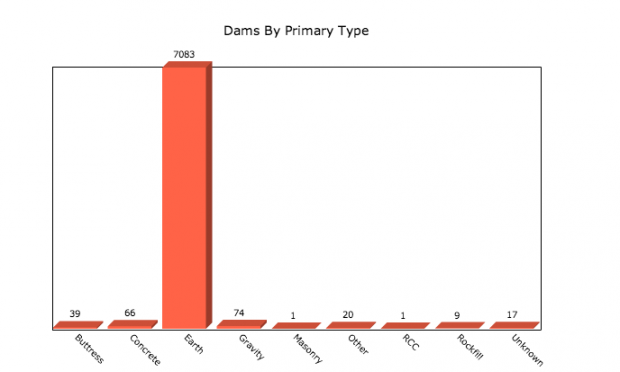If Rains Refill Reservoirs, Can Texas’ Dams Hold Up?
Recent rain and snow haven’t been enough to replenish Texas’ water supply. Years of drought have taken their toll on the state’s reservoirs, some of which remain nearly empty.
Eventually, the reservoirs should fill back up. (Hopefully.) But it’s unclear if Texas’ infrastructure will be able to hold back the waters once that happens.
Experts say that Texas’ dams have incurred severe damage because of the drought and subsequent rains. Dry conditions can cause cracks to form in the dams, which undermines their structural integrity.
This is especially true of earthen dams that are made out of soil and other natural materials, according to Warren Samuelson, head of the Dam Safety Program at the Texas Commission on Environmental Quality.
“[The drought] causes the dams to move, sort of,” says Samuelson. “Cracks are created because it’s dry, and so you have the shrinking and swelling of the soil because they’re earthen structures.”

Chart by U.S. Army Corps of Engineers
Texas' dams by primary type.
Nearly 97 percent of the dams in Texas are earthen dams, according to the U.S. Army Corps of Engineers’ National Inventory of Dams.
Drought can also crack concrete dams by shifting the soil. As the ground around the dam moves, Samuelson says that cracks will “develop through the bottom, up from the concrete.”
And those problems can be exacerbated by rain. Rain causes two main issues for cracked dams: it increases the size of the cracks, and it increases the amount of water that the dam must hold back.
“You get a rainfall event, all the water goes down in the crack. And then you have a more fluid situation in the dam, which can result in slides, and possibly even failure of the dam,” Samuelson says.
Samuelson says he has found cracks that are as large as five inches across by four feet deep. But according to him, that’s not something people think about when they’re building a house or a business.
“People that build downstream of dams don’t understand that there is a dam up there that could at some point could fail possibly. They don’t see any issues at all because there’s no water behind it, therefore there’s no problem,” Samuelson says.
If precipitation refills more of Texas’ reservoirs, those issues could soon become apparent downstream of dams across the state.


